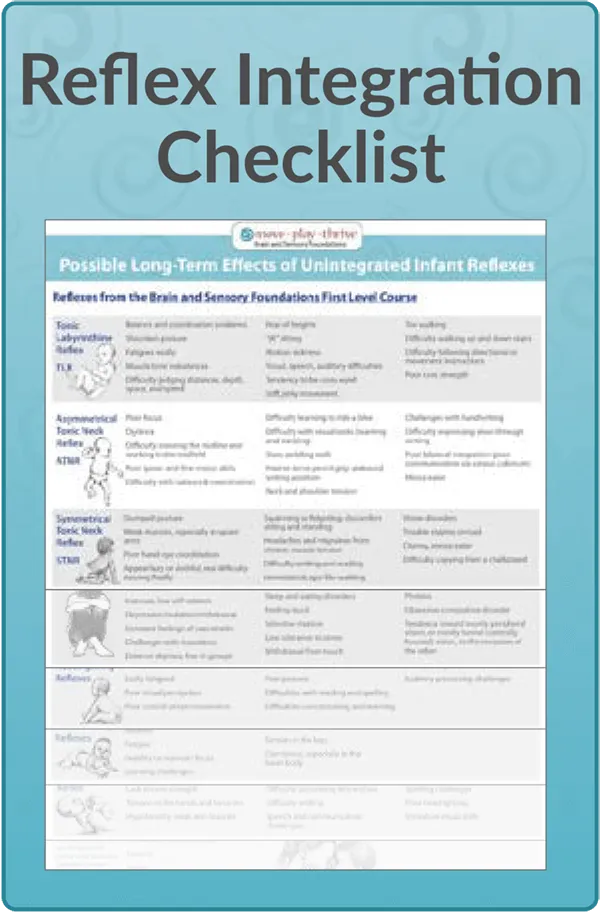Primitive and Postural Reflexes
A main area of focus in the Brain and Sensory Foundations Curriculum is to integrate primitive reflexes and develop postural reflexes to boost functional skills.
Download the FREE Reflex Integration Checklist Chart.
Get the checklist of common signs associated with unintegrated primitive reflexes and underdeveloped postural reflexes. This free Reflexes Checklist details all of the infant reflexes covered in the Brain and Sensory Foundations curriculum, listed below. This useful checklist for parents and professionals helps us to recognize challenges that may be related to development—it makes so much sense to uncover and address root causes!
Neurodevelopmental movements drive brain, body, and sensory maturity and are important for addressing balance, posture, coordination, anxiety, sensory issues, ADHD, learning challenges, social-emotional issues, and developmental delays. They comprise several types of infant movements, including primitive reflexes and innate rhythmic movements. Discover rhythmic movement training principles.
 The Amphibian reflex is an important postural reflex that helps us to voluntarily move in a rhythmic and coordinated manner. As with other postural reflexes, once it emerges—in this case between the ages of 4 and 6 months—the Amphibian ideally remains active throughout the lifespan. When this reflex is absent or underdeveloped, fatigue, clumsiness, or difficulty engaging in cross-pattern movements may result.
The Amphibian reflex is an important postural reflex that helps us to voluntarily move in a rhythmic and coordinated manner. As with other postural reflexes, once it emerges—in this case between the ages of 4 and 6 months—the Amphibian ideally remains active throughout the lifespan. When this reflex is absent or underdeveloped, fatigue, clumsiness, or difficulty engaging in cross-pattern movements may result.
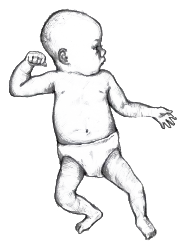 The Asymmetrical Tonic Neck Reflex (ATNR) is important for helping with ADHD, sensory processing challenges, motor challenges, and learning issues. The ATNR links the head, eyes, and limbs together; resulting in automatic movement of the eyes and limbs when the infant turns the head to the side. In this asymmetrical response the arm and leg on the face side of the head extend, while the limbs on the opposite side flex and curl up towards the head. Emerging around 18 weeks in utero, ATNR initially gives the fetus stimulation for developing muscle tone and the vestibular system.
The Asymmetrical Tonic Neck Reflex (ATNR) is important for helping with ADHD, sensory processing challenges, motor challenges, and learning issues. The ATNR links the head, eyes, and limbs together; resulting in automatic movement of the eyes and limbs when the infant turns the head to the side. In this asymmetrical response the arm and leg on the face side of the head extend, while the limbs on the opposite side flex and curl up towards the head. Emerging around 18 weeks in utero, ATNR initially gives the fetus stimulation for developing muscle tone and the vestibular system.
 Bonding is the process of creating a secure parent-child attachment. It is a complex set of intertwined parent-child behaviors that are dependent on and greatly supported by several primitive reflexes, such as the Facial-Oral reflexes.
Bonding is the process of creating a secure parent-child attachment. It is a complex set of intertwined parent-child behaviors that are dependent on and greatly supported by several primitive reflexes, such as the Facial-Oral reflexes.
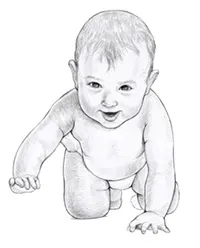 There are enormous benefits to crawling, and healthy infants whose movements are not restricted will naturally engage in various forms of crawling. The crawling reflexes and crawling itself are immensely important for optimal physical, sensory, emotional, and cognitive development. Infants are meant to engage in both belly crawling and hands-and-knees-crawling. Smooth, aligned crawling builds muscle tone, coordination, and helps to develop sensory systems.
There are enormous benefits to crawling, and healthy infants whose movements are not restricted will naturally engage in various forms of crawling. The crawling reflexes and crawling itself are immensely important for optimal physical, sensory, emotional, and cognitive development. Infants are meant to engage in both belly crawling and hands-and-knees-crawling. Smooth, aligned crawling builds muscle tone, coordination, and helps to develop sensory systems.
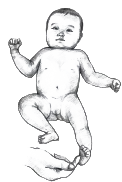 The Crossed Extensor Reflex (CER) has a variety of characteristics, phases, and functions. It acts as a protective reflex in utero and early infancy. Later it supports independent limb-movement, optimal coordination, crawling, and symmetrical walking.
The Crossed Extensor Reflex (CER) has a variety of characteristics, phases, and functions. It acts as a protective reflex in utero and early infancy. Later it supports independent limb-movement, optimal coordination, crawling, and symmetrical walking.
 The Facial-Oral reflexes—rooting, sucking, and swallowing—emerge in the womb and are present at birth. These reflexes ensure proper latching onto the breast, and they are important for soothing, feeding, and survival. Sucking is one of the first innate rhythmic movements and is essential for healthy development and growth.
The Facial-Oral reflexes—rooting, sucking, and swallowing—emerge in the womb and are present at birth. These reflexes ensure proper latching onto the breast, and they are important for soothing, feeding, and survival. Sucking is one of the first innate rhythmic movements and is essential for healthy development and growth.
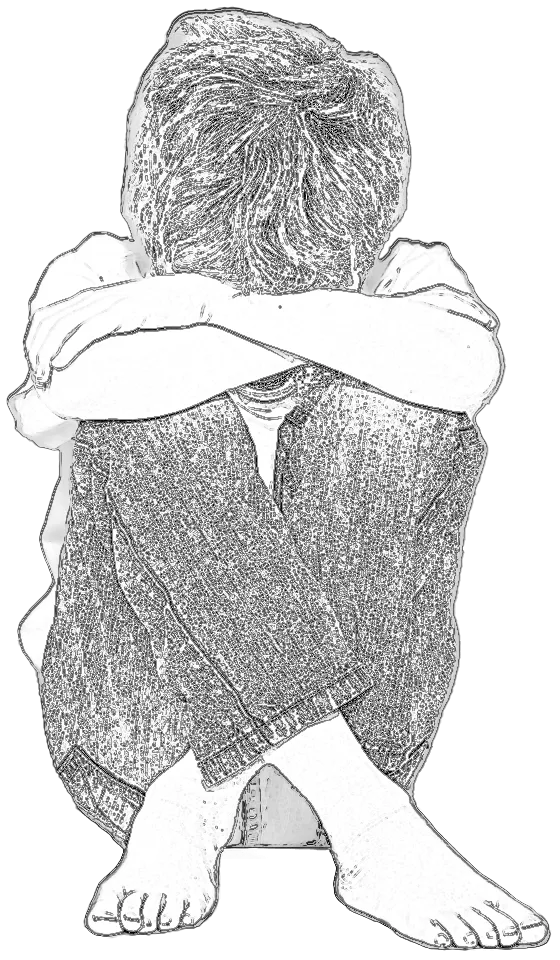 Fear Paralysis Reflex integration is key for addressing anxiety, trauma, shyness, obsessive/compulsive behaviors, selective mutism, challenges with transitions, perfectionism and procrastination. The Fear Paralysis Reflex (FPR) emerges at 5 to 8 weeks in utero and is ideally integrated before birth. Among experts there is not agreement about the exact nature of FPR except that it is a fear response to unexpected or threatening events. This can include sudden sensory stimuli.
Fear Paralysis Reflex integration is key for addressing anxiety, trauma, shyness, obsessive/compulsive behaviors, selective mutism, challenges with transitions, perfectionism and procrastination. The Fear Paralysis Reflex (FPR) emerges at 5 to 8 weeks in utero and is ideally integrated before birth. Among experts there is not agreement about the exact nature of FPR except that it is a fear response to unexpected or threatening events. This can include sudden sensory stimuli.
 The feet reflexes are important for calming the nervous system and helping with structural, postural, and gait issues. They develop both the muscles and the neural networks in the feet. Retained—also known as unintegrated—feet reflexes interfere with our ability to balance, stand, walk, and run with ease and fluidity.
The feet reflexes are important for calming the nervous system and helping with structural, postural, and gait issues. They develop both the muscles and the neural networks in the feet. Retained—also known as unintegrated—feet reflexes interfere with our ability to balance, stand, walk, and run with ease and fluidity.
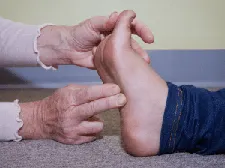 The Foot Tendon Guard Response is a protective response activated by physical or emotional stress. It represents a set of physiological changes rather than a distinctive movement pattern, and therefore is not a true primitive or postural reflex—though it supports the integration of several primitive reflexes.
The Foot Tendon Guard Response is a protective response activated by physical or emotional stress. It represents a set of physiological changes rather than a distinctive movement pattern, and therefore is not a true primitive or postural reflex—though it supports the integration of several primitive reflexes.
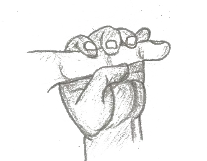 The Grasp and Palmar/Babkin reflexes have a substantial impact on the functioning of the hands, including the easy acquisition of fine motor skills. Links between the hand reflexes and the mouth have also been shown to affect oral motor function, oral-tactile sensitivity, and speech abilities.
The Grasp and Palmar/Babkin reflexes have a substantial impact on the functioning of the hands, including the easy acquisition of fine motor skills. Links between the hand reflexes and the mouth have also been shown to affect oral motor function, oral-tactile sensitivity, and speech abilities.
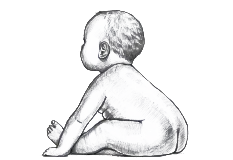 Headrighting reflexes belong to the postural—rather than primitive—class of reflexes. Once developed, these reflexes are designed to be active and functioning throughout our lives. They support stamina, visual processing, and efficient recovery from head, neck, and back injuries.
Headrighting reflexes belong to the postural—rather than primitive—class of reflexes. Once developed, these reflexes are designed to be active and functioning throughout our lives. They support stamina, visual processing, and efficient recovery from head, neck, and back injuries.
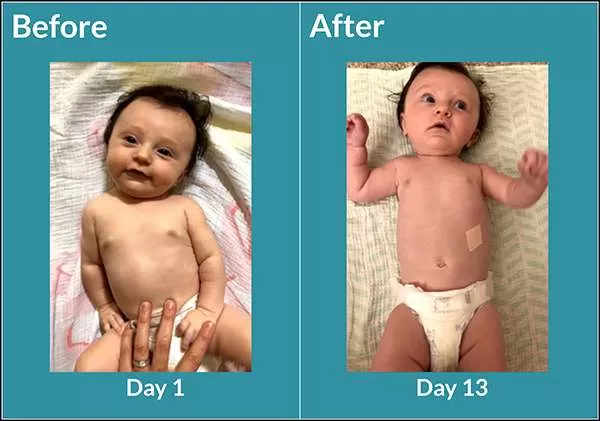 Infant torticollis is a shortening of the sternocleidomastoid muscle on one side of the neck, causing a lateral tilt of the head and chin rotation toward the side opposite the tilt. Torticollis can result from a difficult birth, injury, trauma, or congenital issues.
Infant torticollis is a shortening of the sternocleidomastoid muscle on one side of the neck, causing a lateral tilt of the head and chin rotation toward the side opposite the tilt. Torticollis can result from a difficult birth, injury, trauma, or congenital issues.
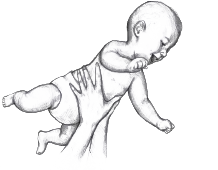 The Landau reflex, sometimes called the “flying reflex”, is stimulated when the infant is in prone or held in ventral suspension, and is crucial for developing core strength. It begins emerging at approximately 4 weeks of age, when a prone infant starts lifting the head up against gravity. By 2 months of age infants are ideally able to lift the chest along with the head, and begin using the arms. The full Landau pattern of lifting the head, chest, and all four limbs—as if flying—should be in place by 6 months.
The Landau reflex, sometimes called the “flying reflex”, is stimulated when the infant is in prone or held in ventral suspension, and is crucial for developing core strength. It begins emerging at approximately 4 weeks of age, when a prone infant starts lifting the head up against gravity. By 2 months of age infants are ideally able to lift the chest along with the head, and begin using the arms. The full Landau pattern of lifting the head, chest, and all four limbs—as if flying—should be in place by 6 months.
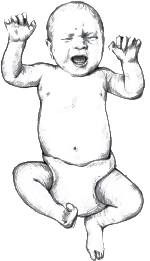 The Moro Reflex is essential for the development of sensory processing and emotional regulation. Moro reflex integration promotes calm sensory processing, emotional regulation, core strength, stamina, balance, and health. The Moro reflex may be exceptionally helpful for volatile, anxious, and highly sensitive individuals because it calms the fight-or-flight response and allows the neuro-sensory-motor systems to mature.
The Moro Reflex is essential for the development of sensory processing and emotional regulation. Moro reflex integration promotes calm sensory processing, emotional regulation, core strength, stamina, balance, and health. The Moro reflex may be exceptionally helpful for volatile, anxious, and highly sensitive individuals because it calms the fight-or-flight response and allows the neuro-sensory-motor systems to mature.
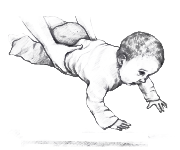 The Parachute reflex, sometimes called Hands Supporting Reflex, is a protective response that in optimal development emerges between 8-12 months of age. When tipped forward, the infant brings the arms and hands out in front of the body to provide protection against falling face-first towards a surface. As the Parachute reflex develops, it protects the infant in both sitting and standing positions from vertical or horizontal surfaces, including surfaces located to the side of or behind the body.
The Parachute reflex, sometimes called Hands Supporting Reflex, is a protective response that in optimal development emerges between 8-12 months of age. When tipped forward, the infant brings the arms and hands out in front of the body to provide protection against falling face-first towards a surface. As the Parachute reflex develops, it protects the infant in both sitting and standing positions from vertical or horizontal surfaces, including surfaces located to the side of or behind the body.
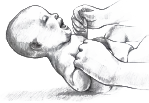 The Pull-to-Sit reflex is engaged when an infant lying in supine is pulled forward and up by the wrists. The pulling on the wrists and arms is meant to stimulates automatic bending of the arms, followed by flexion of the infant’s neck and abdomen, with the head lifting up in line with the torso. This active engagement of the arms, neck, and core help bring the baby safely up into a sitting position, and further develops the muscles in those regions.
The Pull-to-Sit reflex is engaged when an infant lying in supine is pulled forward and up by the wrists. The pulling on the wrists and arms is meant to stimulates automatic bending of the arms, followed by flexion of the infant’s neck and abdomen, with the head lifting up in line with the torso. This active engagement of the arms, neck, and core help bring the baby safely up into a sitting position, and further develops the muscles in those regions.
 The Spinal Galant Reflex involves hip rotation when the back is touched on either side of the spine. The stimulation causes the infant’s pelvis to tilt up towards the head on the side of the body being touched. The shoulder and head may also curl down towards the hip. This reflex is important for addressing bedwetting, back pain or tension, tactile sensitivity, and fidgeting.
The Spinal Galant Reflex involves hip rotation when the back is touched on either side of the spine. The stimulation causes the infant’s pelvis to tilt up towards the head on the side of the body being touched. The shoulder and head may also curl down towards the hip. This reflex is important for addressing bedwetting, back pain or tension, tactile sensitivity, and fidgeting.
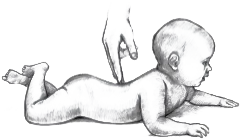 The Spinal Perez reflex is an automatic lifting of the head, chest, and pelvis when an infant’s spine is stimulated from the sacrum to the neck. In normal development the Spinal Perez is present at birth and integrates within 2-4 months. It is one of the key reflexes for addressing bedwetting.
The Spinal Perez reflex is an automatic lifting of the head, chest, and pelvis when an infant’s spine is stimulated from the sacrum to the neck. In normal development the Spinal Perez is present at birth and integrates within 2-4 months. It is one of the key reflexes for addressing bedwetting.
 The Symmetrical Tonic Neck Reflex (STNR) has two automatic movement patterns resulting from flexion and extension of the head. With this reflex, when the head moves, the upper and lower body parts simultaneously engage in opposite movements. When an infant’s head extends, the upper body also extends while the knees bend and the infant’s bottom sinks down onto the ankles. When the head is flexed, the arms bend while the legs extend—causing the lower torso to raise up. Because the STNR helps the infant to get off the ground and into a 4-point position, it is a necessary precursor to hands-and-knees crawling.
The Symmetrical Tonic Neck Reflex (STNR) has two automatic movement patterns resulting from flexion and extension of the head. With this reflex, when the head moves, the upper and lower body parts simultaneously engage in opposite movements. When an infant’s head extends, the upper body also extends while the knees bend and the infant’s bottom sinks down onto the ankles. When the head is flexed, the arms bend while the legs extend—causing the lower torso to raise up. Because the STNR helps the infant to get off the ground and into a 4-point position, it is a necessary precursor to hands-and-knees crawling.
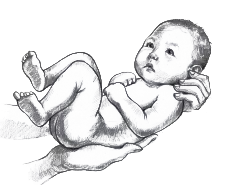 The Tonic Labyrinthine Reflex (TLR) is vital for addressing issues with core strength, balance, vestibular sensitivity, gravitational insecurity, visual challenges, posture, and stamina. This reflex is activated by movement of the head, and provides the baby with a means of learning about gravity and mastering head control outside the womb. TLR has two positions: flexion (forward) and extension (backward).
The Tonic Labyrinthine Reflex (TLR) is vital for addressing issues with core strength, balance, vestibular sensitivity, gravitational insecurity, visual challenges, posture, and stamina. This reflex is activated by movement of the head, and provides the baby with a means of learning about gravity and mastering head control outside the womb. TLR has two positions: flexion (forward) and extension (backward).


